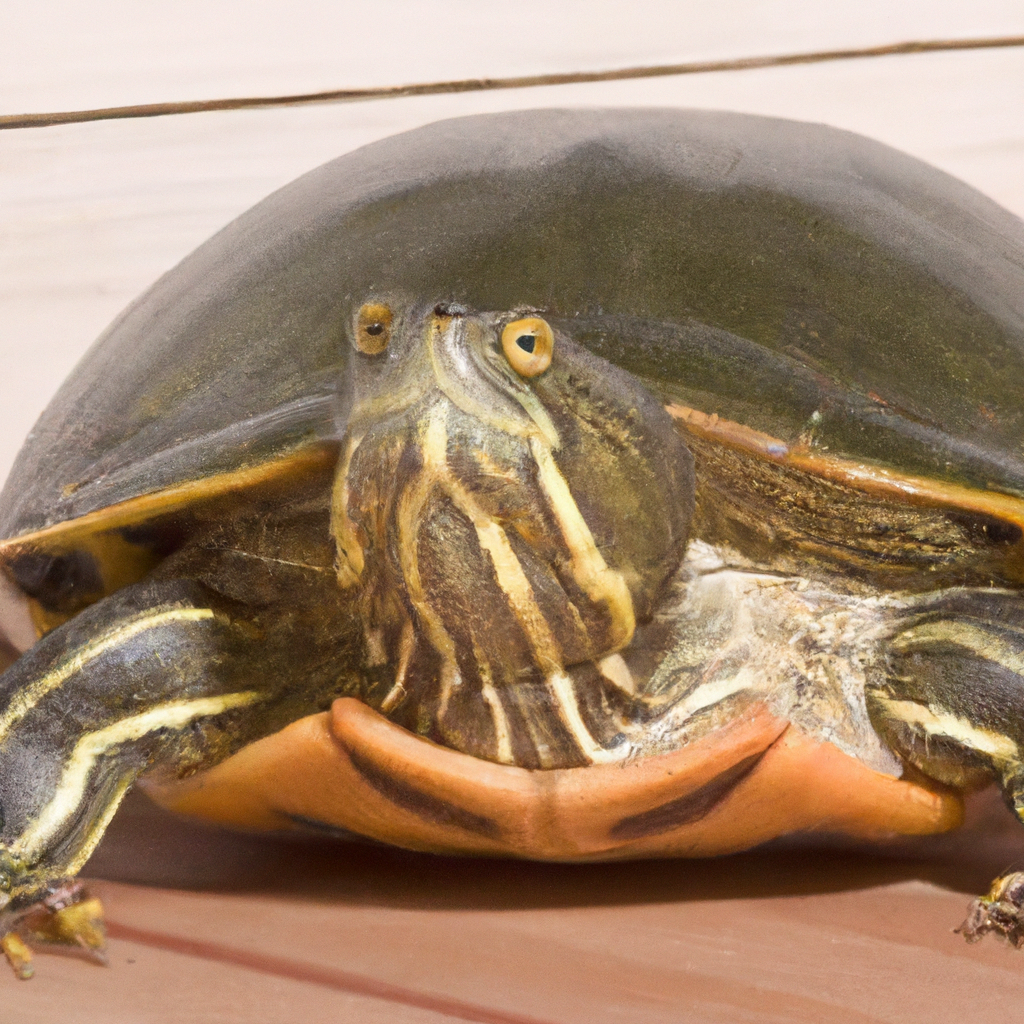Turtles are fascinating creatures, known for their unique shells that serve as a protective armor. However, these shells are not immune to problems, and one common issue is shell rot. This article will provide you with valuable tips on how to prevent and treat shell rot in turtles. With proper care and attention, you can ensure that your turtle’s shell remains healthy and strong, allowing them to thrive in their underwater world.

Understanding Shell Rot
Shell rot is a common issue that pet turtle owners may face, and it is essential to understand its types and causes to effectively prevent and treat it. By knowing the physical and behavioral symptoms of shell rot, you can identify it early and take the necessary steps to address it. Additionally, there are several measures you can take to prevent shell rot, such as maintaining clean tank water, providing a proper diet, avoiding excessive UVB exposure, and conducting regular health checks. If your turtle does develop shell rot, consulting a reptile veterinarian, cleaning and disinfection, applying topical medication, and administering oral medication are recommended treatment options.
Types of Shell Rot
Shell rot can be categorized into two types: fungal and bacterial. Fungal shell rot is caused by fungi that invade and grow on the turtle’s shell, often in warm and humid environments. Bacterial shell rot, on the other hand, is the result of various bacteria infecting the turtle’s shell, leading to the deterioration of the shell’s health. Understanding the type of shell rot your turtle is experiencing is crucial in determining the appropriate treatment method.
Causes of Shell Rot
There are several causes that contribute to the development of shell rot in turtles. Poor water quality, including high levels of ammonia and nitrate, can weaken the shell, making it more susceptible to infections. Inadequate diet and nutrition can also compromise the turtle’s immune system, making it more vulnerable to shell rot. Insufficient UVB exposure or excessive exposure without proper basking areas can affect the turtle’s shell health. Incorrect tank maintenance, such as overcrowding or lack of proper water filtration, can create an environment conducive to the growth of fungi and bacteria, leading to shell rot.
Identifying Shell Rot
Early identification of shell rot is crucial for successful treatment. Both physical and behavioral symptoms can indicate the presence of shell rot in turtles. Physical symptoms include shell discoloration, soft spots or disintegrating areas on the shell, foul odor or discharge, and visible fungal or bacterial growth. Behavioral symptoms may include loss of appetite, lethargy, increased hiding, or rubbing against objects to alleviate discomfort. Regular visual inspections and close monitoring of your turtle’s behavior can help identify shell rot in its early stages.

Preventing Shell Rot
Preventing shell rot is key to ensuring the well-being of your pet turtle. Here are a few essential measures you can take to keep your turtle’s shell healthy:
Maintaining Clean Tank Water
Regularly cleaning and maintaining the tank water is crucial in preventing shell rot. Ensure proper filtration to remove waste and maintain appropriate water parameters. Regular water changes will help maintain optimal water quality and eliminate any potential sources of contamination.
Providing Proper Diet and Nutrition
A well-balanced diet plays a significant role in a turtle’s overall health, including the condition of its shell. Offer a varied diet that includes both commercial turtle pellets and fresh vegetables, such as leafy greens and carrots. Avoid overfeeding and ensure that the turtle receives sufficient calcium and vitamin D3 to support shell health.
Avoiding Excessive UVB Exposure
While exposure to UVB rays is essential for a turtle’s shell health, excessive exposure without proper basking areas can be harmful. Ensure that your turtle has access to a basking area with a UVB lamp that provides the required spectrum and intensity. This will allow the turtle to regulate its exposure and prevent potential damage to the shell.
Regular Health Checks
Keeping a close eye on your turtle’s overall health is crucial in preventing shell rot. Conduct regular veterinary check-ups to identify any potential health issues early on. A veterinarian with experience in reptile care can provide valuable guidance and address any concerns regarding your turtle’s shell health.
Treating Shell Rot
If your turtle does develop shell rot, prompt treatment is essential to prevent further deterioration and alleviate any discomfort. It is highly recommended to consult a reptile veterinarian to receive proper diagnosis and guidance for treatment. The following treatment options are commonly employed for the management of shell rot:
Consulting a Reptile Veterinarian
Seeking professional guidance is crucial in treating shell rot effectively. A reptile veterinarian will be able to diagnose the type and severity of the shell rot and provide appropriate treatment recommendations. They may suggest further tests, such as bacterial or fungal cultures, to determine the specific pathogens causing the shell rot.
Cleaning and Disinfection
Thoroughly cleaning and disinfecting the turtle’s tank and any accessories is an important step in the treatment process. Remove any visible debris or foreign material from the shell, and clean the tank with a reptile-safe disinfectant. It is crucial to follow the instructions provided by the veterinarian or the disinfectant manufacturer to ensure effective disinfection without harming the turtle.
Applying Topical Medication
Depending on the severity of the shell rot, topical medication may be prescribed. These medications are applied directly to the affected areas of the shell and are usually recommended for fungal shell rot. Follow the veterinarian’s instructions regarding application frequency and duration of treatment.
Administering Oral Medication
In more severe cases of shell rot, oral medication may be required to address the underlying bacterial infection. The veterinarian will prescribe the appropriate medication and provide instructions on dosage and administration. It is important to complete the full course of treatment as prescribed to ensure effective eradication of the infection.
Home Remedies for Shell Rot
While seeking professional veterinary care is the recommended course of action for treating shell rot, there are a few home remedies that some turtle owners may consider under a veterinarian’s guidance. However, it is important to note that these remedies should not substitute professional treatment. Some home remedies that may be used under professional supervision include:
Saltwater Soaks
Saltwater soaks can help promote the healing process and control the growth of bacteria and fungi. A shallow container filled with warm, saline water can be utilized for brief daily soaks. It is important to use reptile-safe salt, following the veterinarian’s instructions on the appropriate concentration.
Honey Treatments
The application of honey to the affected areas of the shell can provide a soothing and antibacterial effect. Honey possesses natural antimicrobial properties and may aid in the recovery process. However, it’s important to use only small amounts of honey and to consult with a veterinarian before attempting this remedy.
Tea Tree Oil Applications
Tea tree oil has also been utilized by some turtle owners as a topical treatment for shell rot. Its antifungal and antibacterial properties can assist in combating the infection. However, care must be exercised as tea tree oil can be toxic if used in excessive amounts or if ingested by the turtle. It is crucial to consult with a veterinarian regarding the appropriate concentration and application method.
Supportive Care for Turtles with Shell Rot
In addition to the specific treatments for shell rot, providing supportive care for your turtle is vital to aid its recovery:
Monitoring and Isolation
Keep a close eye on the turtle’s condition and progress of healing. If you have more than one turtle, consider isolating the affected turtle to prevent potential spread of infection. Regularly inspect the shell for any signs of deterioration or recurrence of shell rot.
Maintaining Optimal Temperature and Humidity
Maintaining appropriate temperature and humidity levels in the turtle’s enclosure is crucial for its overall health and recovery. Turtles require a warm basking area with a temperature gradient to regulate their body temperature effectively. Adequate humidity will prevent the shell from drying out and aid in the healing process.
Providing a Balanced Diet
Ensure that the turtle continues to receive a balanced diet throughout its treatment and recovery. A healthy diet rich in calcium and other essential nutrients will support the healing process and help strengthen the shell.
Regular Veterinary Check-ups
Continue to seek regular veterinary check-ups to monitor the progress of the treatment and ensure that the turtle’s overall health is improving. The veterinarian may adjust the treatment plan or provide additional guidance based on the turtle’s response to treatment.
Common Mistakes to Avoid
When dealing with shell rot in turtles, there are a few common mistakes that should be avoided:
Delaying Treatment
Delaying the treatment of shell rot can significantly worsen the condition and make it more challenging to manage. If you suspect that your turtle may have shell rot, seek professional assistance promptly to prevent further damage and discomfort.
Inadequate Tank Maintenance
Neglecting proper tank maintenance, including regular cleaning, proper filtration, and water quality control, can contribute to the development or worsening of shell rot. Ensure that you maintain a clean and suitable environment for your turtle to minimize the risk of infection.
Using Incorrect Medications
Using medications intended for other animals or human use can be ineffective or even harmful to turtles. Always consult a reptile veterinarian, who will prescribe the appropriate medications and provide proper instructions for their use.
Conclusion
Shell rot is a common issue that can affect the health of pet turtles. By understanding the causes, early identification, prevention, and appropriate treatment methods, you can help ensure the well-being of your turtle and maintain a healthy shell. Regular veterinary check-ups, maintaining optimal tank conditions, providing a balanced diet, and seeking professional guidance when needed are essential in preventing and treating shell rot. Remember, prompt action is key in addressing shell rot effectively and reducing any potential discomfort for your turtle.
